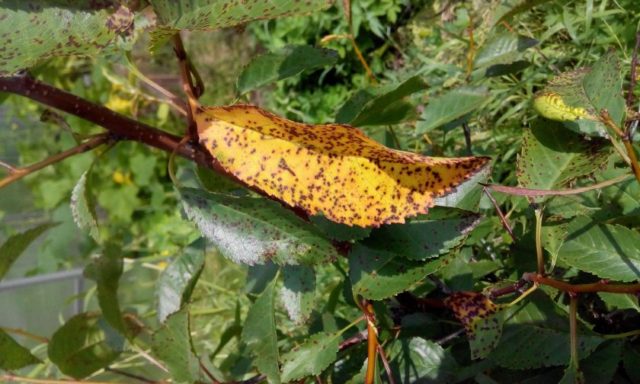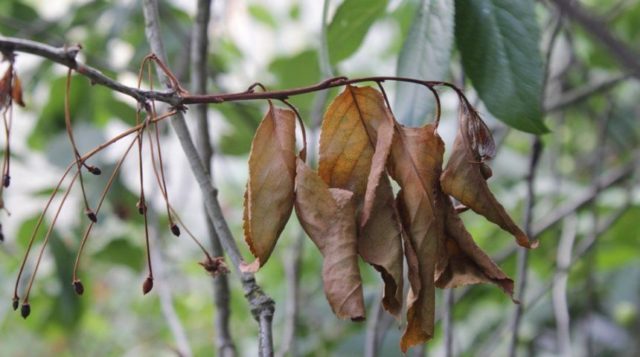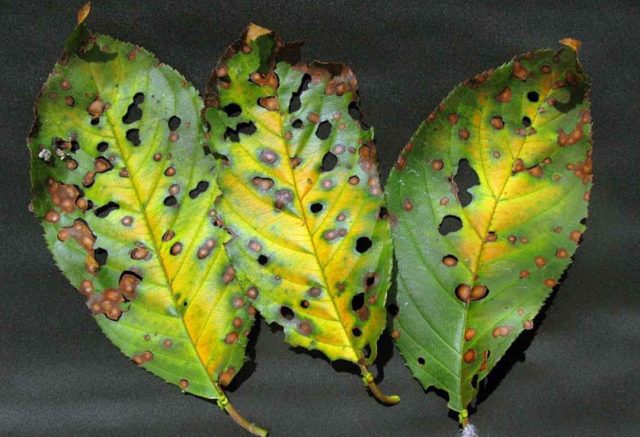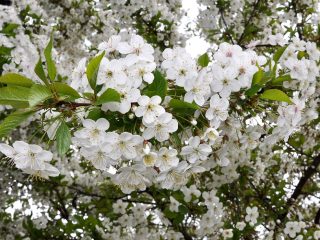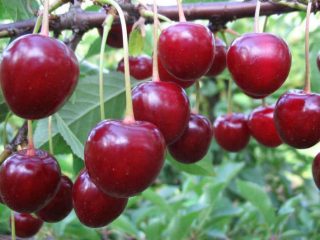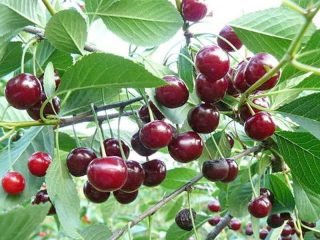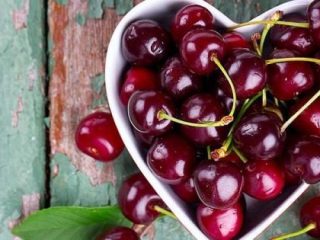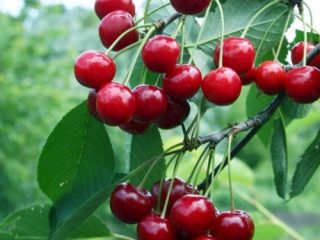Content
Cherry leaves turn yellow not only during leaf fall; sometimes this happens in summer or even spring. To understand what is happening to cherries, you need to study the possible causes of yellowing.
When cherry leaves turn yellow in autumn
Yellowing foliage is a natural sign that the plant has ended its active growing season and is preparing to go dormant. The time at which cherries turn yellow depends on the region and weather conditions. But in general, the tree's leaves change color in early or mid-October, after a steady drop in temperature.
Sometimes gardeners are faced with the fact that a tree begins to turn yellow much earlier than expected - in July, August, or even in mid-spring.If the leaves change color, this indicates that the fruit tree is not healthy.
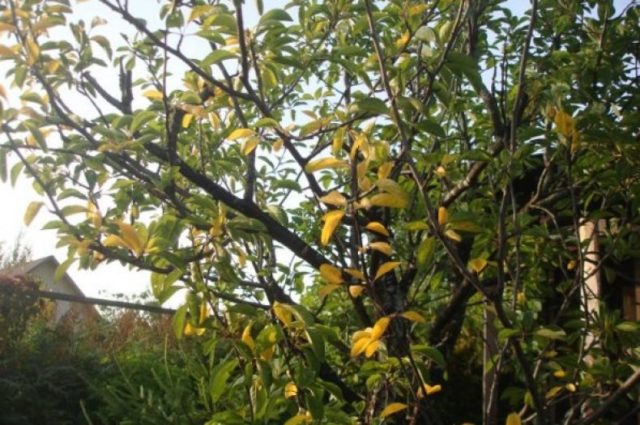
Yellowing of the crown may occur much earlier than expected
The main reasons why cherry leaves turn yellow in summer
There are quite a few reasons for premature yellowing of the crown. Sometimes the foliage turns yellow due to violations of agrotechnical rules, in other cases the unpleasant phenomenon is caused by fungal diseases. If cherry leaves turn yellow and dry, then the most common reasons deserve a more detailed consideration.
Nutritional deficiencies
The tree retains the green color of its leaves only if the process of natural photosynthesis proceeds without interference. It can be disrupted not only due to cold weather and lack of light, as happens in autumn, but also due to a lack of nutrients in the soil.
It often happens that the leaves turn yellow due to a lack of iron in the soil. This disrupts photosynthesis, the leaves gradually begin to turn yellow, and then completely fall off.
Cherry leaves turn yellow in June when there is insufficient nitrogen in the soil. A characteristic symptom is a mosaic of color - the green leaf blades first become pale, then lighten, and then gradually acquire a yellow tint.
If the leaves turn yellow from the lower branches, and the yellowness gradually rises higher, this may indicate a lack of magnesium.
With a phosphorus deficiency, the leaf blades can become not only yellow, the cherry leaves turn red and fall off, or acquire a bronze tint. A lack of potassium results in the leaves turning yellow, but with a red border around the edges.
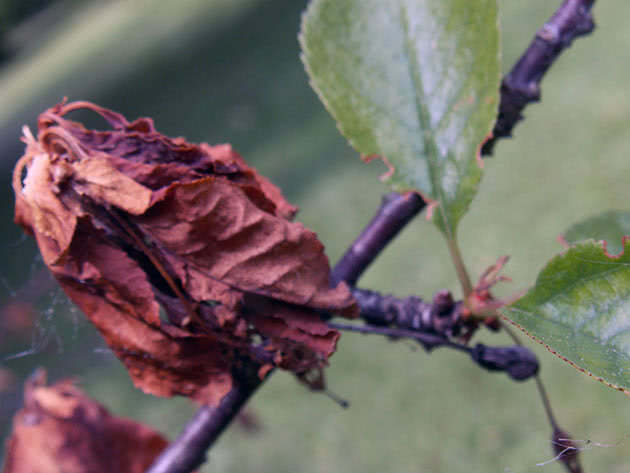
When there is an imbalance of nutrients, the foliage of fruit plants turns yellow, red and curls.
Soil waterlogging
The leaves of a tree can turn yellow not only due to drought, but also due to swampiness. If groundwater flows near the roots of the fruit tree, or the gardener often waters the cherry tree unnecessarily, too much moisture accumulates in the soil. This leads to chlorosis, a disease in which leaves change color.
A characteristic feature of chlorosis is that the tree turns yellow from the top, and gradually the yellowness affects the leaves in the lower part of the tree. To treat the plant, it is necessary to treat it with iron sulfate 2%, and also to revise the watering schedule or completely replant the cherry.
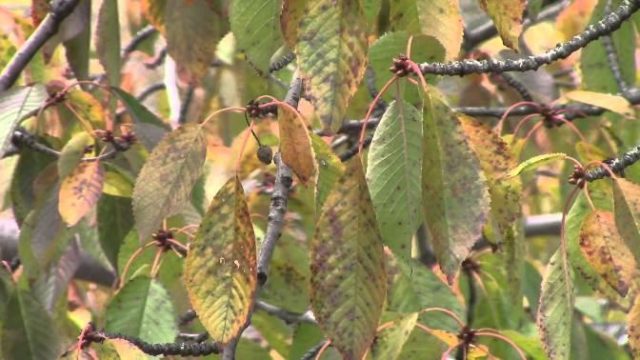
Excess moisture leads to rotting of the roots and yellowing of the crown
Diseases
Fungal diseases also lead to changes in the color of the leaves of the tree. Most often, yellowing occurs due to several diseases:
- Coccomycosis. Infection with fungal spores occurs in late autumn or winter, but symptoms of the disease appear only the following year. Cherry leaves turn yellow in July or even early summer, acquiring a characteristic brownish tint.
- Moniliosis. Another common disease of cherries also leads to yellowing of the leaves, and then to premature leaf fall. Infection with moniliosis usually occurs due to harmful insects - moths and caterpillars. If moniliosis spores begin to spread throughout the plant, then first individual leaves on the cherry turn yellow and curl, and then the entire crown takes on a burnt appearance and falls off.
- Clusterosporiasis. The fungus of this disease usually develops in conditions of waterlogging and appears in late spring and early summer. You can recognize klyasterosporiosis by the fact that when the disease occurs, the cherry leaves turn yellow and fall off, becoming covered with small through holes.
If the crown has turned yellow due to fungal diseases, then the tree must be urgently treated with fungicidal preparations, and then all parts affected by the disease must be removed and destroyed.
Causes of yellowing of cherry leaves in some cases
In some cases, yellowing is caused by special reasons specific to certain conditions or varieties of wood. If you know about these reasons, it will be easier to determine the cause of the problem.
Why did the cherry leaves turn yellow after transplantation?
Almost immediately after planting a tree in the garden, amateurs often encounter yellowing of the crown of the seedling. In such cases, it is customary to say that the plant “did not take root,” but the true reasons for the crown falling off are quite specific.
The cause of yellowing of the leaf blades of a seedling may be root damage. If the transplant was carried out carelessly, and the main root broke or cracked, then the nutritional system would then be severely disrupted. A seedling with broken roots cannot receive nutrients in the required volumes and therefore begins to turn yellow and dry out.
Also, yellowing of the foliage can be caused by a lack of zinc or iron in the soil - since during transplantation the seedling finds itself in unusual conditions, the health of the tree may decline. Often, after planting in the ground, cherries turn yellow and dry out on soils with a high lime content.
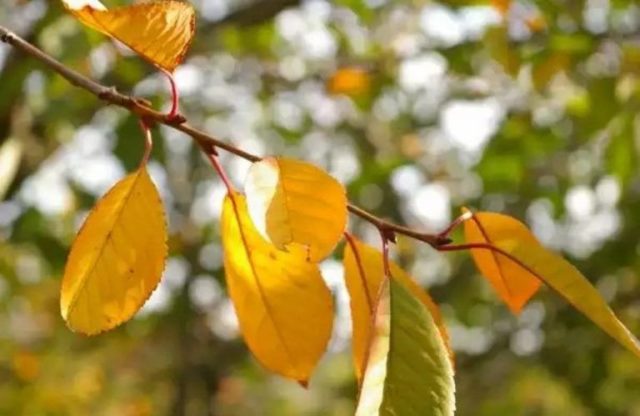
Cherry seedlings turn yellow and die due to damage to the roots and lack of nutrients
Why do young cherry leaves turn yellow?
Young trees that have just entered the fruiting period may turn yellow for the following reasons:
- cracking of the trunk - if the winter was too cold and the tree was not covered, the cherry could freeze severely to the point of gum leaking out of the bark and damaging vital systems;
- too alkaline soil - young cherries do not grow well in soil with excess chalk or lime content, since in such conditions the production of chlorophyll is disrupted.
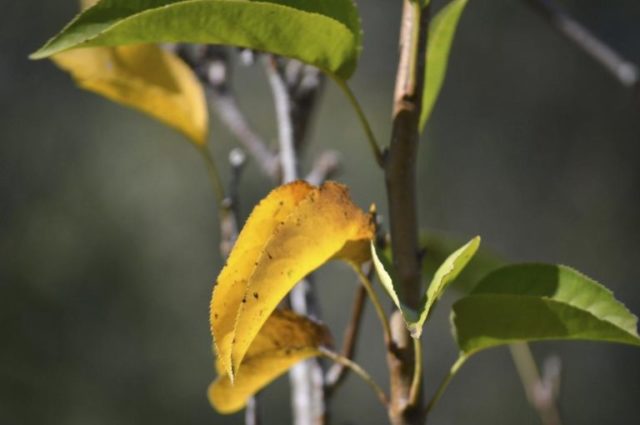
Yellowing of young cherries may be due to frost, alkalization of the soil or disease
If cherry leaves turn yellow and fall off in July, the cause may be bacterial cancer; young trees especially often suffer from it. When affected by bacterial canker, not only the leaves on the cherry turn yellow and curl, but also ulcers appear on the bark and the fruits become deformed.
Why do felt cherry leaves turn yellow?
Felt cherry foliage may turn yellow due to all the reasons listed above. But there are additional reasons characteristic of this type of fruit tree:
- Felt cherry is characterized by very rapid growth and rapid growth of young shoots. The leaves on its crown may turn yellow after the roots freeze in cold winters with little snow. In this case, the tree simply becomes unable to supply its own green mass with nutrients and gets rid of its foliage.
- Felt cherries may turn yellow and fall off due to drought.A severe lack of moisture harms the plant in the same way as an excess of water, especially considering that the tomentose variety consumes more nutrients.
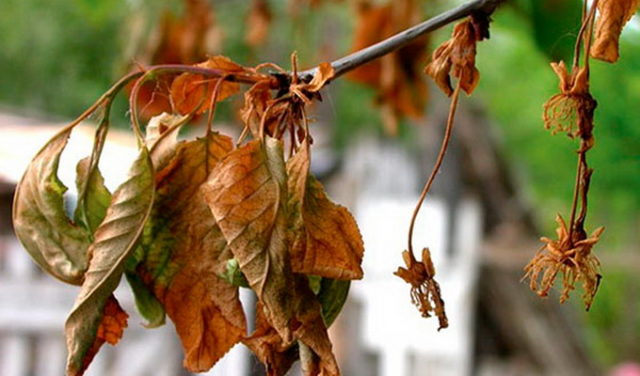
Felt cherry trees suffer from drought and freezing roots
Before looking for signs of fungal diseases on the leaves of a fruit bush, it is worth analyzing the care of cherries, and perhaps the reason for the yellowing will become clear immediately.
What to do if cherry leaves turn yellow and fall off
The first step in case of premature yellowing is to determine the cause of the unpleasant situation. Once the source of the problem has been found, the gardener will only have to take action. If the cherry leaves fall in the summer, you need to do the following:
- If the cherry tree is affected by fungal diseases, it is necessary to urgently undergo sanitary pruning. All shoots with yellowed leaves must be removed, and healthy parts treated with Bordeaux mixture or proven fungicides, for example, Horus, Polyram or Topsin.
- If the soil lacks nutrients, you need to add fertilizing - nitrogen, potassium or phosphorus. When alkalizing the soil, the tree trunk circle is treated with gypsum, iron sulfate or organic fertilizers, and alfalfa or mustard can also be sown near the cherries.
- If cherry leaves turn yellow in August due to improper watering, you need to increase the moisture supply or, on the contrary, reduce unnecessary watering. The most difficult problem to solve is if the cherry tree grows in a lowland on swampy soil; in such cases, all that remains is to move it to a new place.
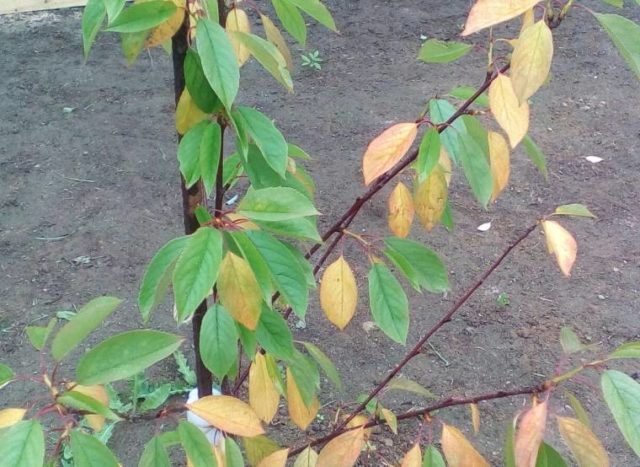
If the crown turns yellow, the fruit tree can still be saved
The main reasons why cherries turn yellow
If the leaves on a cherry tree turn yellow, red and fall off in the summer, then the troubles do not always end there. The fruits of the cherry tree can also turn yellow - during the ripening period they do not acquire the normal dark color, but remain pale and watery, and then begin to rot. This is usually caused by several reasons:
- lack of minerals - nitrogen, potassium or phosphorus, with a deficiency of which the cherry simply cannot accumulate sufficient strength for normal fruiting;
- coccomycosis and moniliosis, diseases affect not only the leaf blades, but also the ripening berries, which turn pale and begin to rot;
- cherry pests, in particular cherry flies and weevils, which eat the pulp of the fruit from the inside.

If the fruits have turned yellow, then it will no longer be possible to save them; you must fight for the whole tree
In all cases, yellowing of fruits can be combated; the main thing is to notice the problem in time.
What to do if cherry fruits turn yellow
The fight against yellowing of fruits comes down to several therapeutic measures:
- First of all, the tree is treated for fungal diseases; ideally, this should be done prophylactically, without waiting for problems to appear. Bordeaux mixture or Hom are suitable for spraying.
- The tree is also sprayed against pests - the insecticides Spark, Lightning and Karate work well.
- The plant is fed with minerals - to strengthen the ovary, it is especially useful to spray the cherry with urea and add potassium to the tree trunk.
The gardener needs to understand that if the fruits have turned yellow, they will no longer be able to be saved. Most likely, the current year's harvest will be lost or will be very small, but next year the tree will bear fruit in full.

Fungicidal and insecticidal treatments can prevent yellowing of fruits.
Prevention measures
Preventing yellowing of tree leaves is quite simple. To do this, you need to follow several rules:
- plant the crop in a well-lit place and away from groundwater on the site;
- do not overdo it with watering, but also do not let the tree dry out;
- Fertilize on time and feed the fruit tree at least three times per season;
- promptly remove organic debris from the site - leaves, fallen fruits and other debris, and also carry out sanitary pruning annually;
- Every spring and summer, spray cherries against fungi and insects as a preventative measure.
Conclusion
Cherry leaves turn yellow not only from diseases. the cause may be a mineral deficiency or improper watering regime. Good agricultural technology when growing cherries is of great importance; gardeners should not neglect feeding and spraying cherries.
